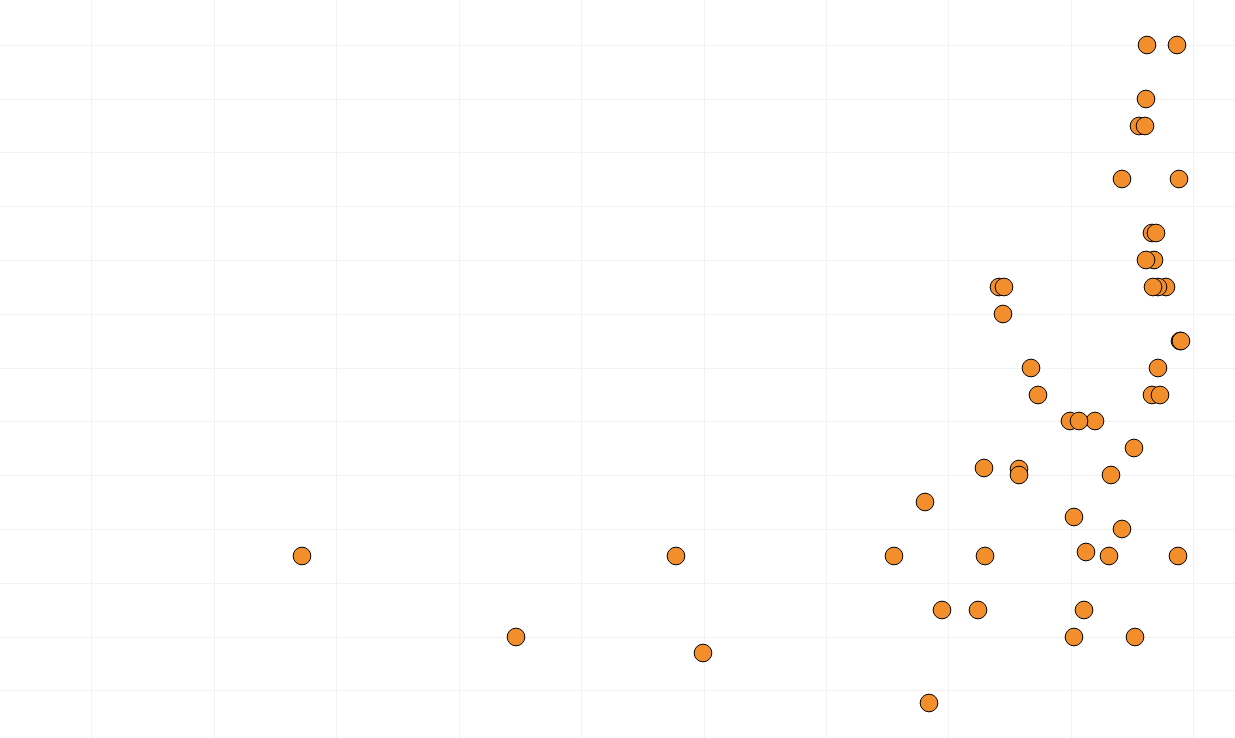Recent reports have demonstrated that brand-name medication prices are not increasing at the same rate as prior years. We’ve highlighted similar trends in our digging as well. While slowing list price increases can be helpful, and certainly understandable given the amount of coverage drug prices have gotten over the previous year, it misses one of the key points within the brand drug marketplace. Brand-name drug cost pressures have less and less to do with year-over-year price increases and more to do with the launch prices of new brand name medications when they initially come to market.
So naturally, we saw an opportunity for a visualization to shed some light on launch prices. This report introduces the latest visualization added to the 46brooklyn toolkit - the 46brooklyn Drug Pricing Launchpad. Spoiler alert! Brand-name drug launch prices are rising aggressively. This is a problem for sure, but why its a problem may surprise you. This report will take you on a journey through the lifecycle of a drug, and illustrate how high pre-rebate list prices on brand-name drugs today become a profit opportunity for the supply chain off generic drugs in the future.
Read MoreIt’s the middle of July. A time of year for pool parties, barbecues, campfires. and generally sweating your butt off. It’s a relaxing time of year for the majority of us. But what about the ski bums out there? It’s a long six months (five if you are lucky) until the first big dump of the year. At 46brooklyn, we sympathize with people who are impatiently waiting for things – except rather than waiting to shred the gnar, we’ve been anxiously waiting to shred through Medicare Part D drug pricing data. Good news, drug pricing enthusiasts; we have a big (data) dump for you! After months of work on our newest drug pricing tool, we are pleased to release the new Medicare Part D Drug Pricing Ski Slope dashboard. In this viz, we give you the ability to select one of many drugs (brand and generic, oral solid and non-oral solid), and view the price set by thousands of Part D plans for your selected drug. For good measure, we added a line to show you the true market-based cost of the drug (based on NADAC), so you can see how frustratingly random Part D pricing is by different plans for the same drug. So get your balaclava on and join us as we traverse the Part D drug pricing slopes.
Read MoreOver the last nine months we have sliced and diced generic drug pricing within Medicaid managed care to arrive at the conclusion that generic prices in Medicaid are subject to wild and seemingly arbitrary distortions. But the million dollar (or should we say $2 billion dollar) question is whether this problem is isolated to Medicaid, or if it is a broader issue plaguing Medicare Part D and Commercial plans as well? We now attempt to bring data into the fold to help answer this question. In this report, we embark on an in depth investigation into the pricing of the top 15 generic drugs in Medicare Part D - drugs that represented roughly a third of overall Part D generic spending in 2017. It turns out that the same arbitrary generic pricing behavior we have observed in Medicaid is alive and well within Part D. If you make it all the way to this report, you will be rewarded with all the math that estimates this problem to be worth over $2 billion in 2017.
Read MoreAverage Wholesale Price (AWP) is a meaningless benchmark price for generic drugs. This has been known for at least a decade, if not longer. But despite its lack of substance, AWP-based payment models just won't go away. Unfortunately the contractual reliance on a benchmark that has no relevance to actual price makes it very difficult for the payer to know if they are getting a good deal or not. They are left to pay a fixed discount off of an unknown combination of meaningless, non-market-based, numbers. Seems like that would be tough sell, but this is drug pricing we are talking about, so of course, it's the norm. For the past couple months, we compiled data to create a visualization to help illustrate the problem that arises by anchoring generic drug costs to AWP. The finished product is embedded in this latest report "Inside AWP: The Arbitrary Pricing Benchmark Used to Pay for Prescription Drugs," along with our observations and analysis.
Read More








